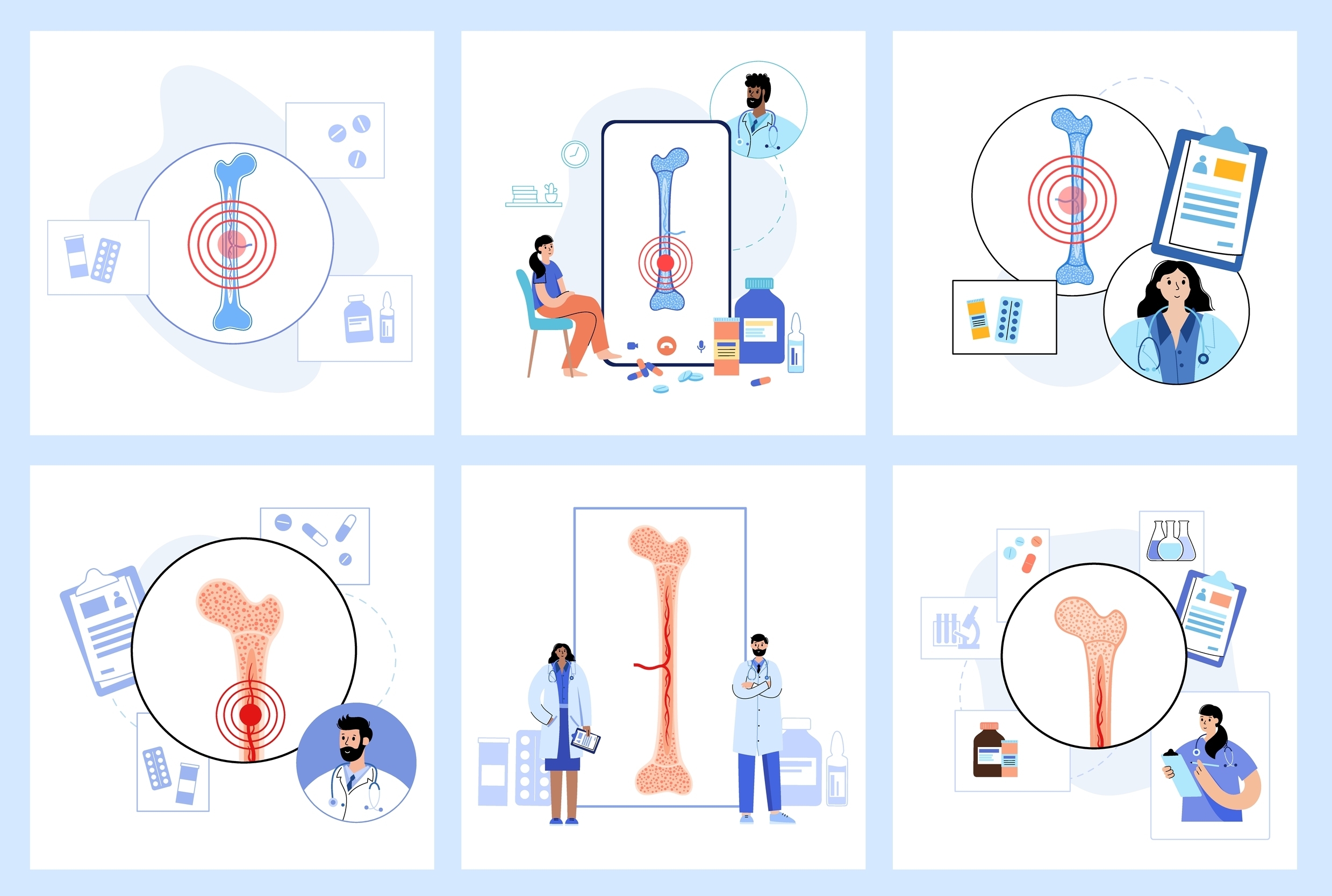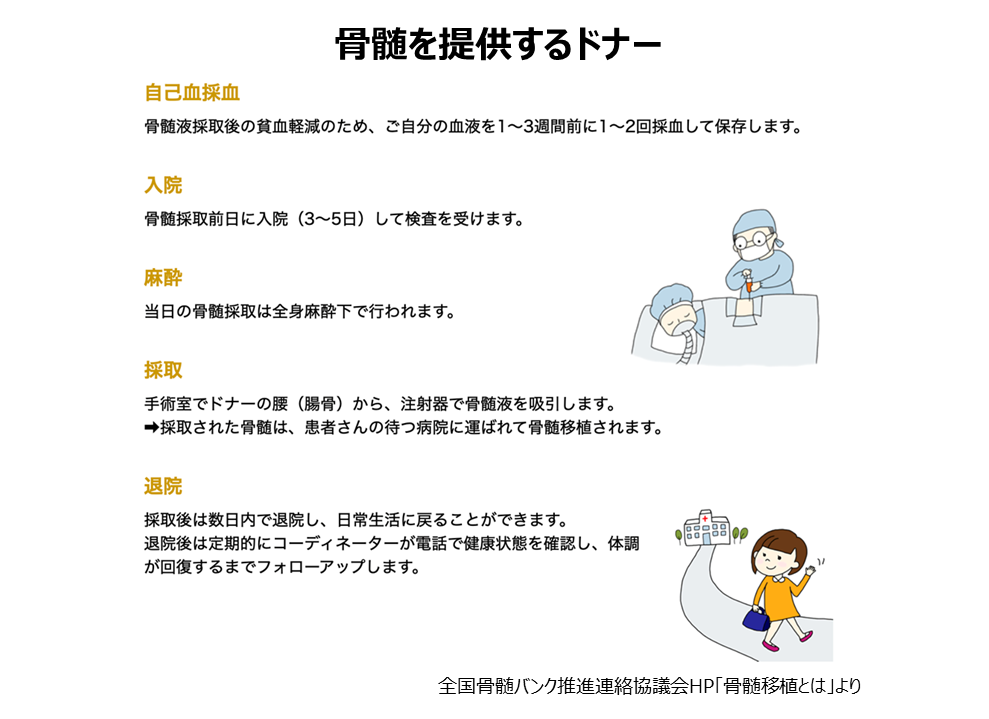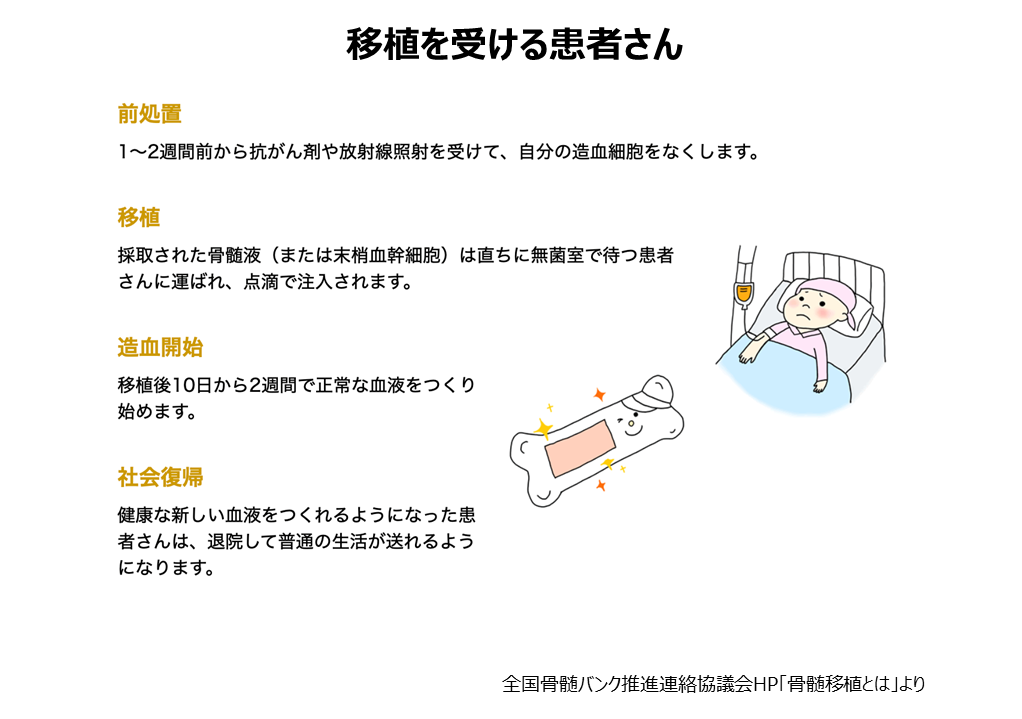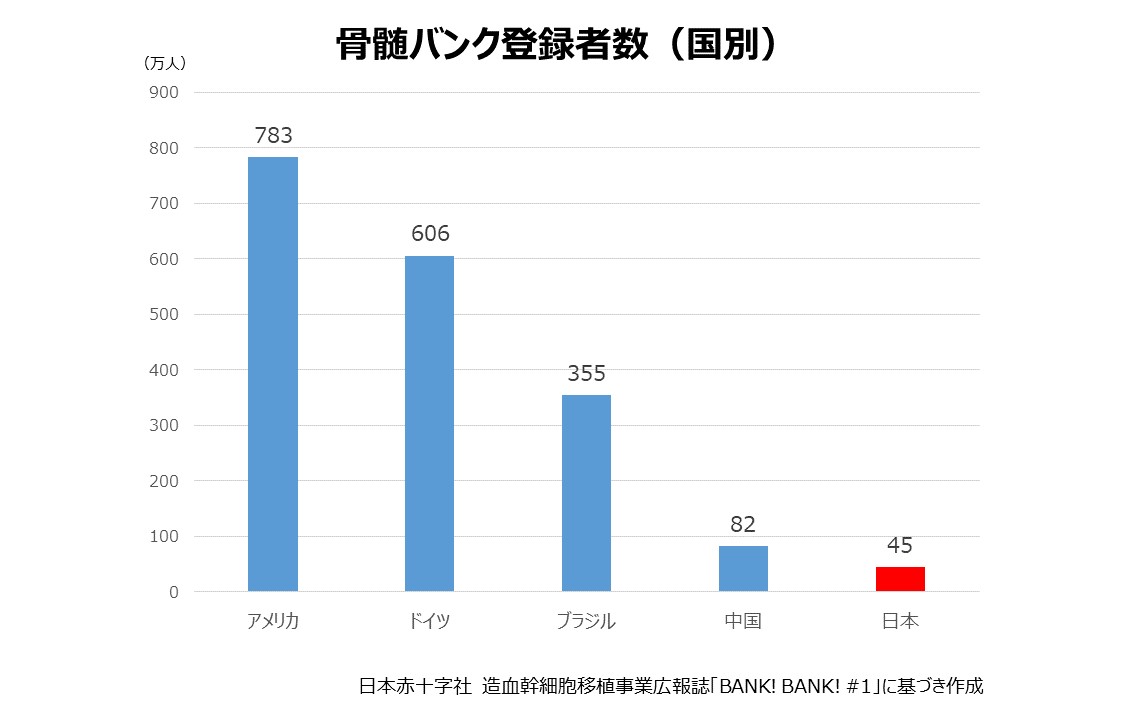
Release date: 2023.12.26
Bone marrow transplantation is a life-saving medical process that has the potential to save many lives. Therefore, I will summarize the mechanism of bone marrow transplantation in two parts. In the second installment, we will introduce bone marrow collection from donors, the flow of treatment, the current situation overseas, and future challenges.
Once a donor is HLA (white blood cell type) compatible with a transplant-seeking patient, approximately 10 days are required for confirmation tests, final consent interview, pre-collection medical examination for bone marrow and blood, hospitalization for collection, post-collection medical examination, etc. It will be. Donation requires not only the will of the donor but also the consent of the donor's family. The sample is taken from the ilium (hip bone) that forms the pelvis using a syringe under general anesthesia. While lying face down in the operating room, needles are inserted into the ilium in several places on the left and right and suction is performed. The amount of bone marrow fluid to be collected is usually 500 to 1,000 ml, and the time required to collect it is 1 to 3 hours. Donors do not have to pay for hospitalization or transportation expenses, but there is no compensation for lost work. Some government offices and some companies have introduced a special leave system for bone marrow donors. Additionally, some local governments provide financial incentives to those who complete bone marrow or peripheral blood stem cell donation.

The human body is endowed with immunity (the ability to treat things other than itself as foreign and eliminate them), and if a bone marrow transplant is performed without any precautions, engraftment failure will occur due to the patient's immunity. Therefore, during bone marrow transplantation, it is necessary to lower the patient's own immunity, and one to two weeks before the day of transplantation, anticancer drugs and radiation therapy (transplant preparation treatment) are administered to eliminate the patient's own hematopoietic stem cells. On the day of the transplant, hematopoietic stem cells (cells that form the basis of blood cells in the bone marrow) collected from the donor are administered intravenously. It will be replaced by donor blood approximately one to several months after transplantation. There is a risk that immune cells will attack the patient after the transplant, and if that happens, steroids or immunosuppressants will be used to deal with it.

The number of registered bone marrow banks in Japan is approximately 450,000 as of November 2015, but in other countries around the world, there are 7.83 million in the United States, 6.06 million in Germany, 3.55 million in Brazil, and 820,000 in China (as of May 2015). (as of the Bone Marrow Donor Worldwide website), and compared to other countries, the number is currently low.

In addition to bone marrow transplantation, there are other methods for transplanting hematopoietic stem cells: peripheral blood stem cell transplantation. Normally, there are very few hematopoietic stem cells in the peripheral blood (blood that flows throughout the body), but when a drug that increases white blood cells is injected, they also flow into the peripheral blood. They are injected into the donor every day for 3 to 4 days before collection, and once the number of hematopoietic stem cells has increased, they are collected using a device that separates blood components and then injected into the patient using a method similar to bone marrow transplantation.
The number of registered donors is decreasing with age, and the age group with the highest number of registered bone marrow bank donors is 49 years old as of the end of March 2022 (39 years old 10 years ago), and the aging of the population is progressing. I'm here. Increasing the number of young people registering as donors is an urgent issue. Bone marrow transplantation is an effective treatment that saves the patient's life, but a decline in quality of life (QOL) after transplantation is a problem. Due to post-transplant complications and treatment-related side effects, patients may suffer from symptoms such as decreased physical strength and immunity, fatigue, and malaise. To improve QOL after transplantation, it is important to provide treatment that promotes recovery of the patient's physical strength and immunity, as well as psychological and social support for the patient.
MEDIUS Group is developing a business centered on the sale of medical equipment. We (Medical + us) involved in medical care also want to play the role of an information source (Media) that delivers useful information for the medical field and people's healthy tomorrow.